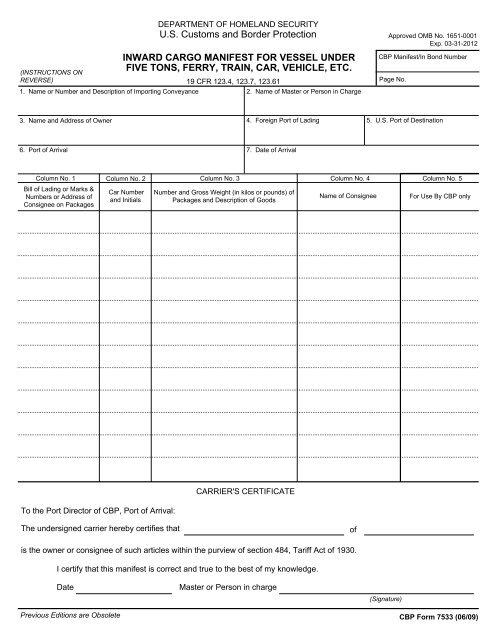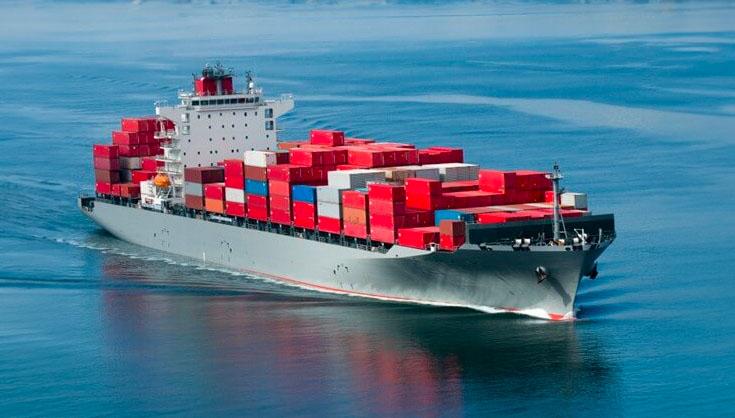Navigating the complex world of transport and shipping requires precision, efficiency, and organization. Enter vessel manifest logistics, the backbone of maritime commerce. In this article, we delve into the intricate workings of vessel manifest logistics, uncovering the key processes and strategies that drive the seamless transportation of goods across the seas. From manifest creation to cargo handling, embark on a journey through the world of shipping and discover the vital role of vessel manifest logistics in ensuring the smooth sailing of global trade.
Understanding Vessel Manifests: Key Components and Importance
Key Components of Vessel Manifests:
When it comes to understanding vessel manifests, it is essential to know the key components that make up this crucial document. A vessel manifest typically includes information such as:
- Vessel Details: This section includes details about the vessel itself, such as the name, registration number, and tonnage.
- Cargo Details: This part lists the cargo being transported, including descriptions, quantities, and weights.
- Port of Loading and Discharge: These details indicate where the cargo was loaded onto the vessel and where it will be discharged.
The Importance of Vessel Manifests:
Vessel manifests play a crucial role in the logistics, transport, and shipping industries. They serve several key purposes, including:
- Customs Compliance: Vessel manifests are essential for customs authorities to verify that the cargo being transported complies with regulations.
- Cargo Tracking: The information in a vessel manifest helps track the movement of cargo from origin to destination, ensuring its safe and timely delivery.
- Documentation: Vessel manifests provide a detailed record of the cargo being transported, which is essential for insurance purposes and resolving any disputes that may arise during shipping.

Strategic Logistics Planning for Efficient Transport Operations
Efficient Cargo Management
When it comes to , vessel manifest logistics plays a crucial role in ensuring smooth shipping processes. By carefully managing and organizing the cargo manifest, companies can optimize their transportation operations and maximize efficiency. Through effective planning and coordination, businesses can streamline loading and unloading processes, minimize delays, and ensure timely deliveries.
Utilizing innovative technology and advanced tracking systems, companies can monitor the status of each shipment in real-time, enabling them to make informed decisions and adjustments as needed. By implementing best practices in vessel manifest logistics, companies can improve operational efficiency, reduce costs, and enhance customer satisfaction.

Optimizing Shipping Processes for Enhanced Supply Chain Management
When it comes to , one crucial aspect to consider is the vessel manifest. A vessel manifest is a document that lists all the cargo on board a ship, providing vital information for logistics and shipping operations. By effectively managing and organizing the vessel manifest, companies can streamline their shipping processes and improve overall supply chain efficiency.
By utilizing advanced technologies such as RFID tagging and real-time tracking systems, companies can ensure accurate and up-to-date information on the status and location of their cargo. This allows for better decision-making, improved inventory management, and enhanced customer satisfaction. Additionally, implementing automated data management systems can help reduce errors and delays, ultimately optimizing shipping processes for a more efficient and cost-effective supply chain.

Implementing Advanced Technologies to Streamline Vessel Manifest Management
With the rapid advancements in technology, it has become imperative for businesses in the transport and shipping industry to embrace innovative solutions for vessel manifest management. By implementing cutting-edge technologies, such as AI-driven automation and blockchain integration, companies can streamline their processes, improve efficiency, and enhance transparency in logistics operations.
Utilizing advanced software solutions can help businesses accurately track cargo, reduce human errors, and expedite the clearance process at ports. With real-time data analytics and predictive modeling, companies can make informed decisions, optimize resource allocation, and ensure timely delivery of goods. By harnessing the power of technology, vessel manifest management can be transformed into a seamless and cost-effective process that drives growth and competitiveness in the global marketplace.
The Way Forward
In conclusion, the efficient management of vessel manifest logistics plays a crucial role in ensuring smooth transport and shipping operations. By accurately documenting and organizing cargo information, companies can streamline the process of loading and unloading vessels, ultimately leading to cost savings and improved customer satisfaction. As technology continues to advance, the possibilities for enhancing vessel manifest logistics are endless. Stay tuned for more innovative solutions that will revolutionize the way we think about maritime transportation. Thank you for reading!
